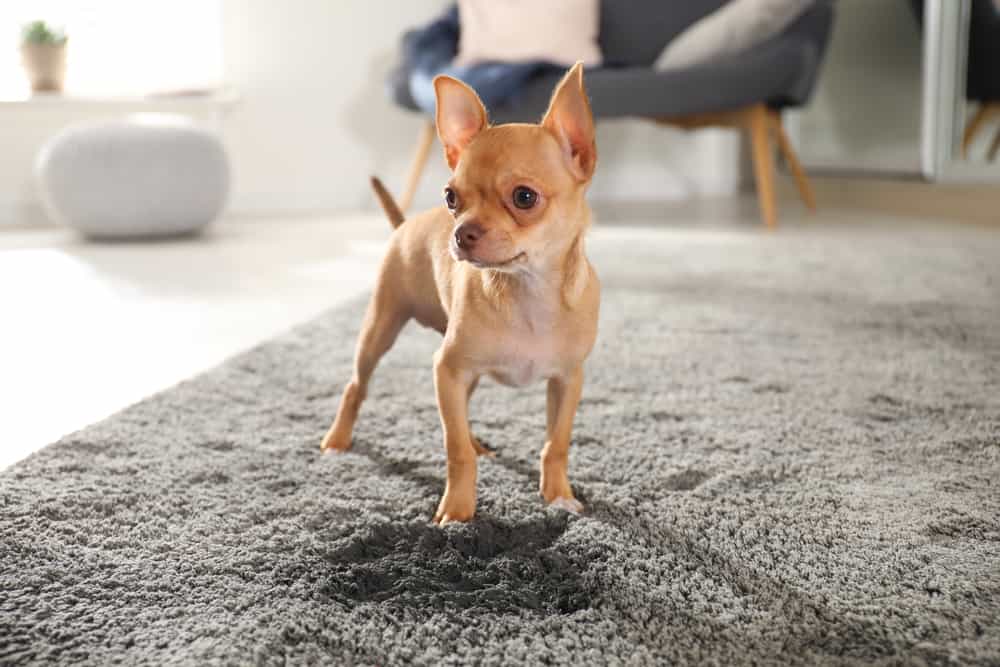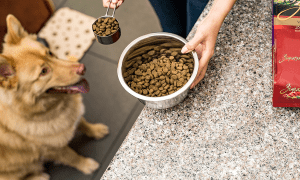“This post contains affiliate links, and I will be compensated if you make a purchase after clicking on my links.”
There’s no denying puppies and kittens are adorable. They are bundles of love that just want to play, but unfortunately, all that energy is sometimes taken out on your nice things. It is possible to train your pet not to destroy your apartment, but it takes time, patience and consistency. Keep reading for five top tips for cohabitating happily with your new pet.

1. Make Sure They Have Enough Stimulation
Animals need a lot of stimulation and playtime, particularly when they are young. Pets that are bored or under-exercised tend to be more destructive at home because they have a lot of energy they need to expend. A crucial part of caring for a dog, for instance, is making sure they have plenty of walks and playtime every day. Without this mental and physical stimulation, you may find your puppy takes their pent-up energy out on your furniture.
Some breeds need more stimulation than others, so do your research before deciding on which pet you want to introduce into your life: you must make sure you have the time and ability to give them what they need. Introducing games, such as hide and seek with a toy, into your daily routine is often enough to tire them out so they will rest while you’re out. Interactive cat toys and puzzle-style dog toys are fantastic ways to keep them mentally stimulated.
Talk to a dog trainer for more ideas for games and tips such as how much exercise your pet needs at different ages: believe it or not, it is possible to over-exercise a dog too, particularly when they are puppies.
2. Find a Balance Between Social and Alone Time
Puppies and kittens may act out when they are trying to get your attention. In addition to giving them stimulation, playing with your pet every day gives them the love they crave. Other ways to give them some one-on-one time include grooming and having cuddles. If your pet knows they will get regular attention from you, they’ll be less anxious about seeking it.
However, it is essential you learn when your pet wants to be alone. This can vary from breed to breed but also depending on the individual personality of the animal. Study what physical signs cats and dogs give to tell you they are feeling uncomfortable. For instance, dogs may yawn or lick their mouths, and cats may hold their tail low.
It is also important to give pets a balance of social and alone time from a young age so they can cope with people alone. If you work from home, spend small increments of time in another room away from your pet. Over time increase the length of time you are away from them. Your pet will learn you always come back, leading to less separation anxiety.

3. Learn Productive Training Methods
When you catch your pet in the act of doing something destructive, such as chewing your shoes or peeing on your rug, it can be very difficult not to shout in anger. Avoid this, as all it does is scare your pet, not teach them what they’ve done is bad.
There are various techniques for training cats and dogs not to chew, scratch or mess in the house, such as using positive reinforcement of good behavior. Consult expert resources, either from books or a dog or cat trainer for in-depth descriptions of training techniques. Just remember: whichever method you choose, be consistent.
4. Rule Out Medical Problems
When your pet is destroying your home, soiling your favorite rug or scratching at your new sofa, it’s easy in your frustration to put it down to them being intentionally naughty. However, according to the ASPCA, bad behavior can be a symptom of various health problems in both cats and dogs.
If you’ve noticed your previously trained cat has started to urinate where it shouldn’t, it could be because they have a urinary tract infection or are experiencing kidney failure. Increased scratching and chewing in both cats and dogs may also be rooted in various medical issues such as anxiety or depression.
Similarly, dogs that soil indoors may be doing so due to changes in diet, environment or medication, gastrointestinal issues or anxiety. If you are experiencing these kinds of difficulties with your pet, it’s best to visit the vet and rule out these medical conditions early on.

5. Give Them Safe Toys They Can Destroy
Scratching and chewing are natural behaviors for cats and dogs, so rather than concentrating on trying to stop them from doing it altogether, you should give them more appealing options that can keep them entertained while keeping your furniture intact.
To find your kitten the best scratching post for them, pay attention to what they enjoy scratching. Cats that scratch soft surfaces will like a carpeted cat post, while those that usually go for wooden table legs and doorframes will probably prefer a cedar model.
Providing your puppy with a selection of cute dog toys can keep them from going after your shoes and cushions. Give them a variety of toys to keep them entertained, though, over time, you may discover they are drawn to specific styles of toys. Dogs often enjoy toys with hidden treats they can sniff out and enjoy. This also engages their brain and keeps them busy for longer.
When you first introduce new toys to your pets, consider making them smell of things they love like catnip or dog treats and placing them near favorite spots to distract them from going for your beloved furniture.
Enjoy Cohabitating With Your New Family Member
Introducing a puppy or kitten into your family will bring you love, joy and lots of laughs, but you have to be realistic: it also comes with compromises. One of those compromises is, much like children, they can mess up your nice things, particularly when they are young.
Over time, by following consistent training techniques and ensuring they get the stimulation, exercise, and love they need, you and your pet can learn to cohabitate happily, and you’ll wonder how you ever lived without each other.





















